The Role of a Director of Photography
Introduction
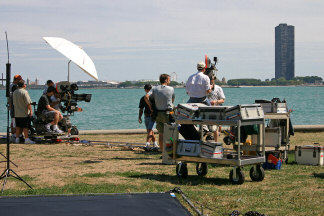 There
are four key roles on a film crew. There’s the Director whose job it is to bring
the whole creative vision of the production to the screen. The producer who is
responsible for the finances and who might also have an influence on the
creative process, depending on the type of production it is. The Production
Manager who is responsible for all the paperwork that needs to be done. Then
there’s the Director of Photography (DoP), who works closest with the Director
to help achieve their creative vision, who can sometimes bear as much
responsibility (and accountability) as the Director when it comes to bringing
the whole creative endeavor to fruition. There
are four key roles on a film crew. There’s the Director whose job it is to bring
the whole creative vision of the production to the screen. The producer who is
responsible for the finances and who might also have an influence on the
creative process, depending on the type of production it is. The Production
Manager who is responsible for all the paperwork that needs to be done. Then
there’s the Director of Photography (DoP), who works closest with the Director
to help achieve their creative vision, who can sometimes bear as much
responsibility (and accountability) as the Director when it comes to bringing
the whole creative endeavor to fruition.
Role
As the second most important creative member of a film production team, the job
of the DoP is to work closely with the Director and Production Designer to help
find the visual essence of the film, then produce a distinct and unique look and
feel that captures this.
The DoP achieve their goals through a creative decision making process in
relation to lighting and camera work that will result in the desired effect on
the mood of each individual scenes of the film. They will work closely with the
camera crew, in order to ascertain just how each and every shot of the film
production will be filmed, regarding elements such as the types and styles of
lighting required, the different types of camera angles to use, any camera
movement required and what, if any, lens filters will need to be used.
Ultimately, the DoP will establish a signature look for a film, then work out
how to achieve that look in each and every scene, as the light requirement will
no doubt change from one scene to another.
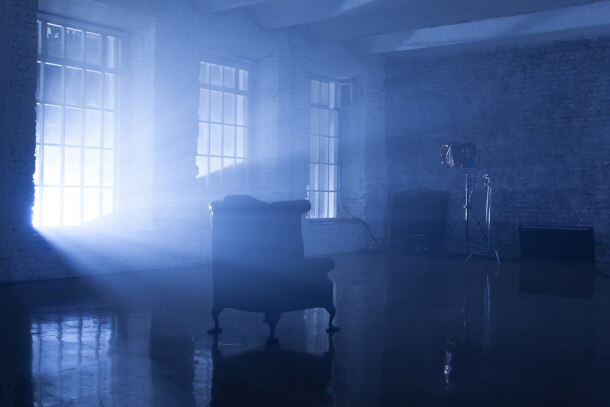
Preparation for a film and just what the signature look will be begins with
source material, such as photographs, images from other films and/or television
series that reflect the look and feel that the Director wishes to achieve with
their production.
While the technical side of the profession – such as camera operation,
lighting style and lighting set up – can easily be taught, the true measure of a
DoP comes from one’s innate ability to engage and entertain an audience with the
visual language of a film that is expressed through the DoP’s creative
decisions.
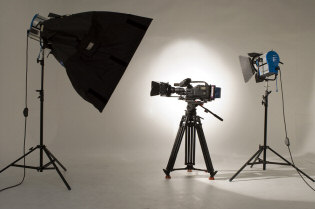 On
set, a DoP works closely with the Gaffer, whose job it is to set up all the
lighting equipment. Despite playing no creative role, the gaffer – along with
his assistant, known as a Best Boy and the Key Grip, who works with equipment
relating to the lighting – plays a key role in getting the exact look and feel
of the film. Collaboration with the Production Designer and other creative
department managers – such as those of the Costume Design and Hair and Make Up
departments – are important in order to achieve the collective creative goals of
the production. On
set, a DoP works closely with the Gaffer, whose job it is to set up all the
lighting equipment. Despite playing no creative role, the gaffer – along with
his assistant, known as a Best Boy and the Key Grip, who works with equipment
relating to the lighting – plays a key role in getting the exact look and feel
of the film. Collaboration with the Production Designer and other creative
department managers – such as those of the Costume Design and Hair and Make Up
departments – are important in order to achieve the collective creative goals of
the production.
Pre-Production Preparations
First and foremost, the DoP runs through the scene that they will be shooting
for the day with the Director. They discuss their pre-production notes and look
over the recce notes – that is, the DoP’s location notes, about how best to
utilize light sources or how best to set up artificial light sources. The two
will discuss how they’ll achieve the signature visual look and feel of the film.
The DoP will write up a list of the equipment they’ll require – beyond the
obvious, such as cameras and light related equipment, they’ll also require film
stock and possibly cranes – and submit the list to the production office, where
the Production Manager will take care of actually obtaining the property.
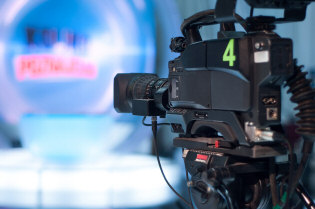 In
preparation of the production, the DoP is required to study the Director’s
notes, which will be detailed in a “bible” that meticulously outline, both in
writing and through visual aids, exactly what the Director wishes to achieve.
The DoP will need to test camera lenses and filters, lighting sources and
lighting set ups, in a process of trial and error in order to get things just
right. In
preparation of the production, the DoP is required to study the Director’s
notes, which will be detailed in a “bible” that meticulously outline, both in
writing and through visual aids, exactly what the Director wishes to achieve.
The DoP will need to test camera lenses and filters, lighting sources and
lighting set ups, in a process of trial and error in order to get things just
right.
Production -- On Set Responsibilities
A day’s shoot begins when the DoP, Gaffer, Best Boy, Grip and Camera Crew arrive
(usually a number of hours before the cast and even the Director may arrive).
The group sets up everything for the day’s shoot.
While the actors rehearse for the day’s scene, the DoP and Director need to
“block” the scene – a process where they and the actors decide just how the
scene will play out, in regards to the movement of the actors throughout the
scene and the camera movements and angles that will subsequently be required.
While both the Director and DoP would already have had an idea of what movements
they wanted to use, once the day of the shoot begins, things change. Actors may
have suggestions, sometimes Directors get inspired and want to try something
new, which can require deviations from the original camera coverage and lighting
plans that the DoP, along with the Camera Operators, Gaffer and Grip need to
account for.
While the 1st Assistant Camera (the DoP and/or the Camera Operator’s
assistant) marks up the required focus and framing, and while the actors are
being made up by the Costume and/or Mark Up departments, the DoP inspects the
lighting set up before giving the go ahead to begin with the first shot.
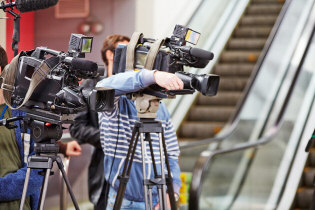 During
filming the DoP may be required (or sometimes prefer) to operate the camera
themselves. During
filming the DoP may be required (or sometimes prefer) to operate the camera
themselves.
The DoP, along with the Director, will conclude the day by viewing the
“rushes” – the day’s footage – to ensure that the quality of the footage is what
they had desired.
Finally, in preparation for the next day, the DoP will need to double-check
that any and all of the required equipment – especially any expensive equipment,
such as any cranes, steadicams or special lenses – for the next day have been
either obtained or ordered.
Post-Production Responsibilities
With the majority of the DoP’s work completed in the production stage of the
film making process, the DoP has little more to do in the post-production stage
of the production. Once the editing process is over with, the DoP is required to
sit in on the color grading process, where the colors and light effects are
adjusted to achieve a consistent tone and look to the overall film.
Conclusion
The role and the inherent importance of a DoP is at least equal, if not more
important, than that of a film’s Director. Still, in the current day and age of
cinema, the role of the DoP is considered secondary to the Director. Whether a
DoP gets adequate credit or not, it’s important to remember that film making is
always a large collaborative effort, with many involved going under-appreciated
– sometimes even unaccredited – regardless of their significant contribution.
It’s the nature of the industry. Nevertheless, it should not take away from the
art that was produced as a result of their effort.
Movies
Top Lists:
Top 15 Most Amazing Movie Theaters in the United States
14 Bleak Aspects of the “Golden” Age of Hollywood
10 Darkest Animated Films Ever Made
Informational:
The Role of a Director of Photography
Why the Film Industry Usually Ruins Cinematic Adaptations |